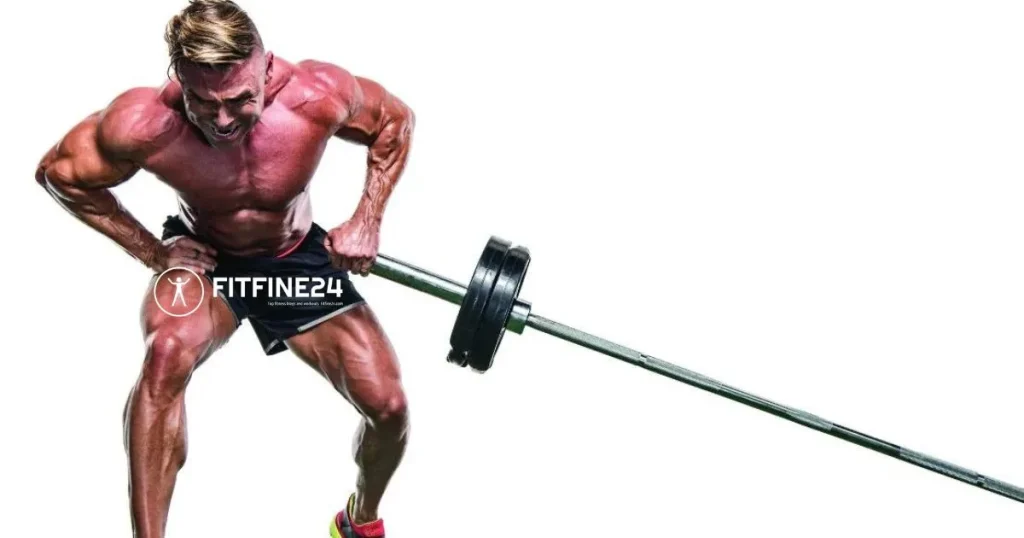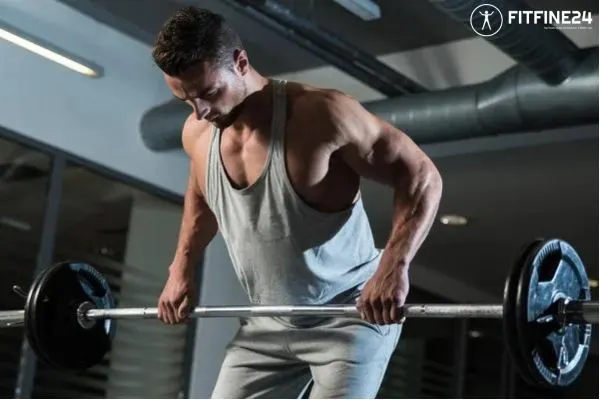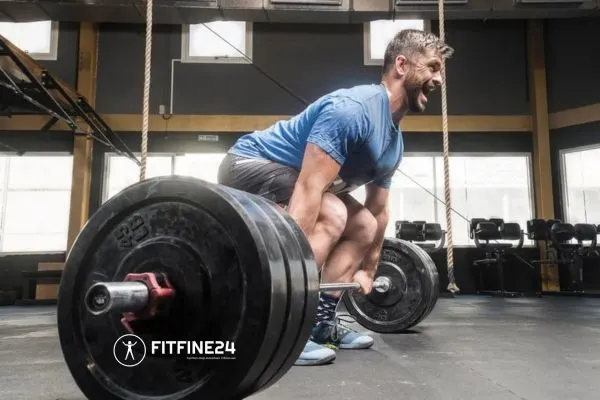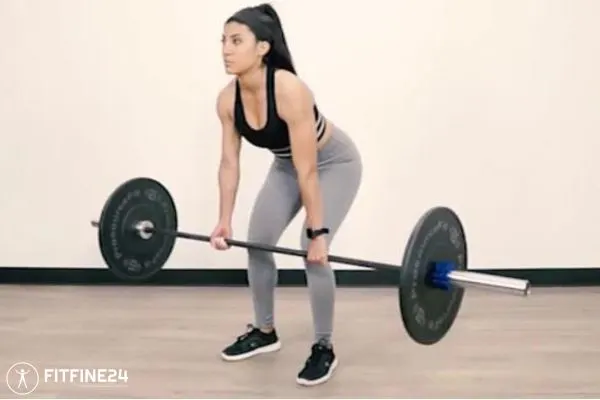
Hello to FitFine24, the one-stop shop for all your fitness-related questions and workout plans. In today’s post, we are going to discuss one of the most important yet very effective strength training exercises: The barbell back squat.
If you wish to add some muscle mass to your legs, increase overall athleticism, or want to incorporate new exercises into your fitness, the barbell back squat is a very effective exercise. This is a simple but highly effective guide on barbell back squats which includes benefits, techniques, and types of barbell back squats to help achieve optimal gains.
What Are Barbell Back Squats?
Barbell back squats refer to squats done with a barbell that is placed on the upper back region, usually at the level of the trapezius. This multi-joint movement is primarily popular because of its hypertrophic benefits, especially as it targets the lower body movement muscles such as the quadriceps, hamstrings, and gluteus, as well as the upper body stabilizing the core.
The back squat is one of the most fundamental exercises that exist in strength training and is key in building power and strength in the muscles of the lower body.

Benefits of Barbell Back Squats
Increased lower-body strength:
It has been established that barbell back squat exercise works on very important muscle groups in the legs, such as the quadriceps muscles, hamstring muscles, as well as gluteal muscles. Hence there is improved lower body strength and power, which helps in sporting activities and even in ordinary living.
Enhanced core stability:
It appears that the efficacy of the back squat is in the ability of an individual to stabilize the torso by pulling in the core and holding it there while squatting. In doing this, a person anticipates the use of their colon and lower back, thus reinforcing the primary structure of their body.
Improved Flexibility:
A better range of motion can be gained by regularly training barbell back squats, especially of the hips, knees, and ankles. As users tend to bend their knees deeply while using a squat, flexibility increases the range of motion and thus can prevent injuries.
Functional Strength Development:

A back squat is an exercise that imitates actual sports motions or actions, which is why it is regarded as a functional exercise. Enhancement of strength through back squats christens running, jumping, and lifting, among others, as easier activities.
Boosted Metabolism:
Being a multi-joint movement that works for several muscle groups, barbell back squat exercise can raise the metabolic rate. This contributes to the burning of calories and enhancing fat loss when carried out in conjunction with a healthy eating plan and training.
How to Carry Out Barbell Back Squat in the Right Manner
Arranging the Equipment:
Select a barbell and weights that you are capable of lifting. Lift the barbell to a position that you intend to place on your shoulders.
Positioning the Barbell:
Walk up to the barbell and support it across the upper part of your back made up of the trapezius muscle. The biceps are placed on the bar with a grip wider than the shoulders, with the elbows facing down and the chest lifted.
Capitulation of Stance Setting:

Your feet are set at shoulder width apart with a slight outward rotation of your toes. You have full weight on both feet, and you engage your core.
Beginning the Squat:
Start the exercise by bending your knees while pushing your hips back in a controlled manner. While performing this, make sure that your chest is up and your back is straight. The knees must always sway in line with the feet and not overshoot in any direction.
Going Down into a Squat:
Elongate your body in a downward manner until such a horizon that your vagus is in line with the floor, which in this case should be the horizontal level of the floor or as much as your body discipline allows. Maintain consistent pacing and the correct position of the body and legs.
Return to Starting Position:
Once your knees become straight and your hips open, transfer your body weight to both heels and stand up straight using your legs. At the end of the movement, consciously squeeze the gluteus muscles and remain upright.
Repeat:

Perform the requisite number of motions or repetitions in a good manner. Modify the number of sets and reps based on your fitness goal and level of strength capacity.
Common Mistakes to Avoid
Leaning Forward:
Do not let the upper body don a forward lean or extend the lower back while in a squat. It is important to keep the torso and lower back in neutral alignment to avoid excessive load in the lower back region.
Knees Caving In:
Do not collapse the knees inwards towards the center of the body line, but ensure that they follow the same line as the toes. It also aids in proper muscle firing, preventing injuries to the knee joint.
Shallow Squats:
Too, shallow squatting is discouraged; aim for novice squats and perform them deep. Too shallow squats leave many muscles disengaged and do not offer the desired intensity that the exercise should provide.
Excessive Forward Lean:
In the case of leaning too much forward, the probable complication would be ankle mobility issues or simply bad weight management. Look for ways to correct your styling and also spend some time boosting your ankle mobility.
Variations of Barbell Back Squats High-Bar Back Squat: Look for high bar squat placement many people will rest the barbell on the upper traps. This variation shifts the emphasis on the muscle towards the quadriceps and enhances the upper body position during a squat.
Low-Bar Back Squat: This is the technique with the bar lower down, on the rear deltoids. This variation is a more posterior chain (hamstrings & glute nerves) dominant, enabling a more forward tilt on the upper torso angle. Front Squat: For this position, hold the barbell in a front rack position, resting on the front shoulders. Therefore, this modification is aimed more at the quadriceps and engages more of the trunk muscles.

Pause Squat: Instead of immediately raising the body after reaching the lowest squat position, one shall pause at the said position. This variation increases muscle time under tension (TUT) and contributes to strength and stability. Box Squat: The squat has to be performed by sitting back on a box or sitting on a bench before rising to an erect position.
Once again, there are alternatives for this variation; however, the objective was more to learn the movement pattern and then use it to build explosive strength. Adding Barbell Back Squats To Your Workout Routine Proper Warm-Up: Following the standard barbell warm-up protocol, we will begin with a dynamic warm-up, making our muscles and joints feel loose. Barbell back squat exercises should be preceded by getting-ready activities such as muscle memory leg swings and lunges, including mild aerobic exercises.
Include in Strength Training:
Barbell back squats should be added to your regimen for strength exercises specifically focused on the lower body. If you wish to have a complete workout, include them with other exercises like deadlifts, lunges, and leg presses.
Use for Power and Performance:
Barbell back squats should be part of powerlifting programs, or other old-school strength training programs to build strength and shape, energy-performance attributes. Use progressive overload and proper technique.
Track Your Progress:
Keep a record of the weight lifted as well as the number of repetitions performed so that you can evaluate your performance after some time. Bear in mind to increase the weight and the intensity gradually after you are accustomed to the stress.
Prioritize Form:
Weight is a function of upper body strength regardless of people’s cultural beliefs. Hence, principle loading should not be even more paramount than the amount of weight being pushed. Lower weight with good form enhances maximum benefit and reduces the chances of getting injured.

Conclusion
All in all, barbell back squats are one of the most basic exercises within the body-sculpting category, and as such, they play a great role in improving one’s lower body strength, flexibility, and general fitness level. But it is also necessary to know how to do them properly and include advanced versions into the program to improve workout results quickly.
Here at FitFine24, we desire to assist each of you in the achievement of your fitness quests by giving you professional tips and well-guided information. Don’t put it off any longer! Begin doing barbell back squats in your training today and see how much transformation it will bring to your body. Don’t go anywhere because more tips and exercises for your effective and interesting routine are coming up!

